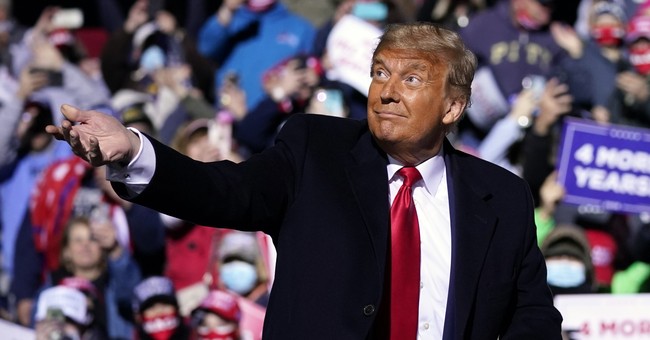
The New York Times props up Trump again.
The left was 110 percent positive that President Donald Trump had a relationship with the Russians that, if not illegal, was at least nefarious on some level. The New York Times, being the leftist’s paper of record, launched an investigation that would prove once and for all that Trump was the Russian puppet they knew him to be.
I can’t help but wonder if they’re regretting that now since they found, and had to admit, that Trump owes the Russians no money at all.
The New York Times had to disprove its own conspiracy theories about Trump’s relationship with the Russians in what had to be a very hard article to write, especially with a title like “No, There Isn’t Evidence That Trump Owes Money to Russia.”
Within the New York Times article, David Enrich lists who Trump owes money to:
According to Mr. Trump’s latest financial disclosure report, filed with the U.S. Office of Government Ethics, he owes at least $135 million to a smattering of small financial institutions such as Ladder Capital. His biggest creditor — to whom Mr. Trump owes well over $300 million — is Deutsche Bank. From 2012 through 2015, the scandal-plagued German bank lent Mr. Trump money for his Doral golf resort in Florida ($125 million), his hotel in Washington ($170 million) and his skyscraper in Chicago (at least $45 million).
The New York Times did, however, push conspiracy theories that would connect Trump owing Deutsche bank money with the Russians:
Why on earth would Deutsche Bank have lent hundreds of millions to Mr. Trump given his track record of stiffing his lenders, including Deutsche Bank itself?
One conspiracy theory is that Deutsche Bank agreed to make the loans because they were backstopped by Russians — the Kremlin or a state-owned bank or an oligarch. If Mr. Trump were to default, it would be the Russians, not Deutsche Bank, on the hook for the losses.
Another, related claim is that after Deutsche Bank made the loans, it sold chunks of them to Russians. It is common for large loans to be syndicated or securitized — in other words, chopped up and sold to investors. In the late 1990s through the mid-2000s, Deutsche Bank did this with some of its large loans to Mr. Trump.
Under this theory, the president would owe the money to Russians, not the German bank.
Enrich admits that the theories don’t hold water well enough to be taken seriously, however. Still, he ends by giving the reader hope that “it is not impossible that evidence will emerge.”
Good luck.
It hasn’t exactly been sunshine and rainbows for the New York Times lately. Yesterday, I reported that the NYT had to admit that Trump’s strategy on COVID-19 was working, destroying months of Democrat narrative driving that he was failing the United States miserably.
(READ: Even the New York Times Is Admitting Trump’s Strategy on COVID-19 Is Working Now)

